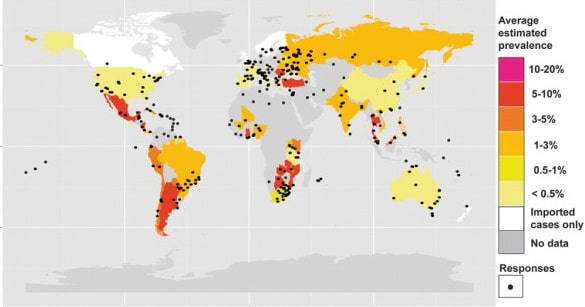Transmissible Venereal Tumor – TVT
TVT what is it and can I get it from my dog?
TVT is, sadly, a very common disease that is spreading among dogs in La Paz and in the world. In México, over 10% of dogs have it and worldwide its frequency can vary from less than 1% of the dogs in places like the United States and Canada to up to 20% in some countries of Central America.

There are only two known kinds of cancer that are transmissible: TVT (transmissible venereal tumor) and the Tasmanian Devil Facial Tumor. There is no known transmissible cancer in humans, and even sick or weak people cannot get it, so don’t worry about contracting it.
However, dogs can get it easily by sexual contact. That’s why sterilization is so important, especially in areas where the cancer is frequent.
Once the dog gets the disease, it can develop into a bleeding cauliflower-shaped tumor in a time-frame of 2 to 6 months, but the first lesions will appear in 3 weeks’ time. TVT can be treated but it has to be detected in time, thus a test called cytology is so important. This test implies taking some samples from the affected area, tint it with some special dyes and examine it under the microscope. The cancerous cells have a very distinctive shape and can be detected even in small amounts by a skilled technician. The test is repeated in 3 weeks in order to identify any cancerous cells that may have had developed during this time.
TVT is treated by chemotherapy and sometimes over 8 doses have to be administered. Most strong and well nourished dogs survive the infection and then they are immune to TVT. There are no vaccines for TVT, so the best way to protect your dog is by sterilizing it.
Rebeca Kobelkowsky, DVM, Dipl., MSc.
